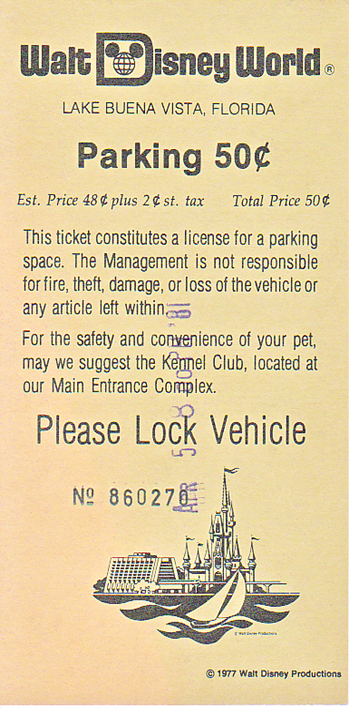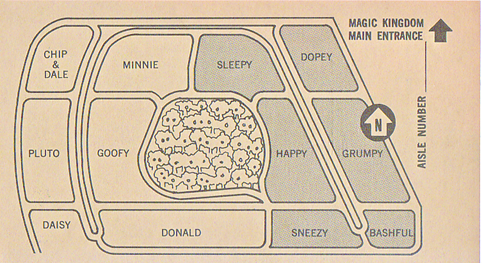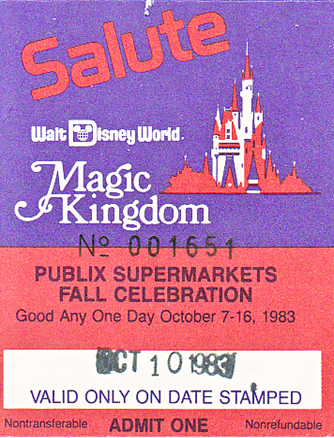I was going through a shoebox full of old family photos recently, and I discovered a couple relics from some Disney World trips we took in the early 1980s.
First, here’s a parking ticket from April 1981. There’s so much to love here; the classic Walt Disney World logo at the top of the ticket, the sailboat/Contemporary/castle logo at the bottom, and most of all, the 50-cent price. In case you’re interested, when you adjust for inflation that 50-cent parking ticket would cost about $1.25 today. Obviously, the current $14 parking fee represents quite a substantial markup. Of course, back then the Transportation budget did not include maintenance on a large fleet of gas-guzzling buses.
Here’s the back side of the ticket, with a nice map of the Magic Kingdom parking lot:
Here’s another interesting little relic of a bygone era: it’s a rare Magic Kingdom park ticket from 1983:
You see, before the Walt Disney Company mushroomed into an international multimedia conglomerate, its Orlando arm wanted to play nice with other Florida businesses. My dad worked for the Lakeland-based Publix Supermarkets, and every year we’d take a trip to Disney World during the period when Disney offered discounted admission for Publix employees and their families.
Another interesting factoid: the date stamp on this ticket is October 10, 1983, the day after Disney raised the price of a one-day adult ticket from $15 to $17, making the discounted price of $11 quite a bargain, especially since it included parking. Note that this is after the attraction ticket books were phased out. Imagine paying only $11 for a day in the Magic Kingdom! These days you can hardly get a hot dog at Casey’s for that price.
Also, notice that the “official” name of the park was “Walt Disney World Magic Kingdom”. I think I like that better than the “Magic Kingdom Park at Walt Disney World Resort” nomenclature that the company uses today.
Park admission was seriously underpriced in the early 1980s, and not long after Michael Eisner took the reins of the company it increased sharply. In fact, between the beginning of 1985 and the end of 1986, the price of a one-day park ticket was raised six times! Those price increases (and the end of the “good neighbor” policy that allowed discounted admission for the employees of some Florida-based companies) effectively put regular trips to Disney World outside of my family’s price range.
Still, I’m glad I got to see the place when it was a smaller, more unique Vacation Kingdom of the World.





